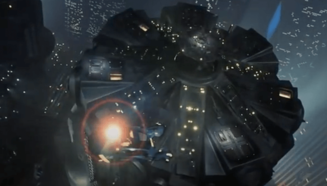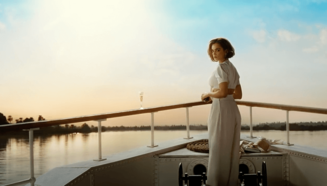Classics and new releases: 6 films for architecture and design lovers
1 min readUnforgotten classics
Psycho
That architecture is a heavily used stylistic device in Hitchcock's films is also very evident in 1960's Psycho. The psychological thriller is initially about secretary Marion Crane, who leaves town with stolen money and ends up staying at an off-the-beaten-path motel. Its owner is Norman Bates, who supposedly lives with his sick mother in the Victorian house next door. Unfortunately, this is not entirely true. One of the most famous film scenes ever occurs: Marion Crane is stabbed to death in cold blood in the shower. The detailed depiction of the motel as well as the perfect linking of the floor plans and sequences shows Hitchcock's affinity for architecture in an impressive way. Belgian art historian Steven Jacobs even dedicated a book to these masterful locations: The Wrong House. This book deals with the various Hitchcock scenes and, with the help of floor plans, site plans and pictures from the set, provides a comprehensive insight into the cinematic spaces of the classics.
James Bond 007 – Goldfinger
The most famous part of the James Bond film series is about Auric Goldfinger, who does everything to increase his wealth. Secret agent James Bond is supposed to put an end to these machinations and thus gets caught in a web of intrigue and secrets. "Goldfinger" is the third James Bond film and was released in 1964. Just like the previous films, it was designed by the German-British film architect Ken Adam who had the enormous vaults of Fort Knox built at Pinewood Studios near London - naturally according to his own ideas. However, this was so authentic and so close to reality for the viewer that many wondered why a British film crew, of all people, was given access to premises that no one else was allowed to enter. A sign of his extraordinary talent.
Blade Runner
Los Angeles in the year 2019. When the science fiction classic Blade Runner was released in 1982, this setting was still pure fiction. Huge neo-romantic billboards, a gloomy atmosphere and the effects of overpopulation characterize the city in the film. It is a dystopian picture that the U.S. film designer Syd Mead drew at the time, and yet it still influences the film industry as well as architects and urban planners today, because many of his visions at the time are now reality. The film is about bounty hunter Rick Deckard, who is tasked with hunting down the so-called replicants – fictional androids – that populate the post-apocalyptic Earth. His home is the Ennis House designed by Frank Lloyd Wright – one of many architectural references in the film.
Inception
In the science fiction film Inception by Christopher Nolan, which was released in cinemas in 2010, architects are given a very special task: they can construct unique dream worlds that simulate a realistic reality for those who are asleep. The film's protagonist is Dominick Cobb, played by Leonardo di Caprio, who has the ability to elicit information from people while they are dreaming. Due to the intertwining of the dream world and reality, the plot is very complex and characterized by many different storylines. Only the architecture helps the viewer to keep the different levels apart, because it serves as a bridge between the worlds.
Worth seeing new releases
Nightmare Alley
In this extraordinary film by director Oscar-winner Guillermo del Toro, currently in cinemas, the viewer is immersed in a world of color and illusion. Stanton Carlisle is a market crier and by chance encounters a traveling fair that lives mainly on fraud. He quickly wants to be part of this colorful world, into whose unexpected abysses he is drawn more and more. Set designer Tamara Deverell is responsible for the pompous and unusual setting, which was inspired by the Art Deco of the 1930s. She makes reference to the blue period of Matisse and Picasso as well as to works by Danish painter Vilhelm Hammershøi. The famous nightclub "Club Copacabana," which captivated many in the 1930s, was also lovingly recreated for the film.
Death on the Nile
Based on Agatha Christie's novel, the film "Death on the Nile" was released in 1978. In February of this year, director Kenneth Branagh's remake of this classic was released. Belgian private detective Hercule Poirot is enjoying his vacation on a cruise ship on the Nile until a young woman is murdered. He immediately takes over the investigation, which is anything but clear-cut, as several of the passengers present seem suspicious. Set designer Jim Clay gives this plot a fitting setting and, as in "Murder on the Orient Express," creates a mysterious and mystical atmosphere. Warm colors characterize the premises of the ship, which was recreated with loving attention to detail especially for the film.














